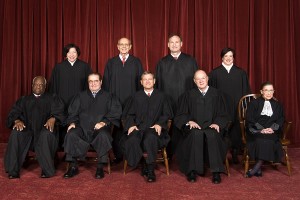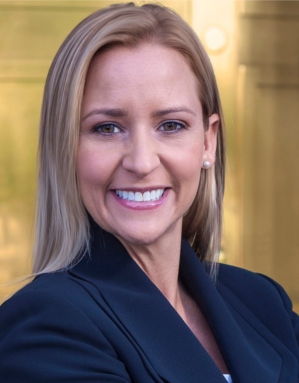 Yesterday we reported Arkansas Attorney General Leslie Rutledge has petitioned the U.S. Supreme Court to uphold the Arkansas Human Heartbeat Protection Act; this good, pro-life law was sponsored by Sen. Jason Rapert (R-Conway) and passed by the Arkansas Legislature in 2013. It prevents most abortions after the twelfth week of pregnancy if a fetal heartbeat is detected.
Yesterday we reported Arkansas Attorney General Leslie Rutledge has petitioned the U.S. Supreme Court to uphold the Arkansas Human Heartbeat Protection Act; this good, pro-life law was sponsored by Sen. Jason Rapert (R-Conway) and passed by the Arkansas Legislature in 2013. It prevents most abortions after the twelfth week of pregnancy if a fetal heartbeat is detected.
Part of the law was struck down by a three-judge panel of the Eighth Circuit Court of Appeals, and the entire Eighth Circuit declined to hear the an appeal of the decision; A.G. Rutledge is petitioning the U.S. Supreme Court to hear the appeal and uphold and law as constitutional.
Central to the A.G.’s petition of the U.S. Supreme Court is whether or not the “viability rule” derived from Roe v. Wade and Planned Parenthood v. Casey needs to be “revisited and overruled.”
The “viability rule” is a significant–albeit arbitrary–judicial principle derived from both rulings, and overruling it would be a major win for protecting human life.
Understanding Roe and Casey
There are a few common misconceptions about Roe v. Wade and Planned Parenthood v. Casey, so before we go any farther, let’s explain those rulings.
Many people mistakenly believe that if Roe v. Wade were overturned, abortion would be illegal nationwide. That is not true. The court’s decision in Roe struck state laws regarding abortion nationwide. Prior to Roe, states were free to make their own abortion laws; some states permitted it; some states prohibited it; and some states allowed abortion in certain circumstances. Roe v. Wade struck all these state laws and instituted abortion-on-demand nationwide.
Planned Parenthood of Southeastern Pennsylvania v. Casey (known commonly as Planned Parenthood v. Casey or simple “the Casey ruling”) was a 1992 ruling that reaffirmed the “essential holding” of Roe.
Roe also instituted arbitrary rules regarding trimesters. Essentially, the court held that as a woman’s pregnancy progresses, the state has an increased interest–and more leeway–in protecting the life of her unborn baby.
This “trimester framework” gave way to the “viability rule” asserted in Planned Parenthood v. Casey that, in a nutshell, says states have more freedom to regulate abortion and protect the life of an unborn baby after it has reached the point of “viability”–roughly the twenty-second or twenty-third week of pregnancy.
Planned Parenthood v. Casey gave the court an opportunity to overturn Roe v. Wade and put abortion laws back into the hands of the individual states; instead, the court struck part of Roe–namely the “trimester framework”–but reasserted abortion as a woman’s right.
“Viability” as discussed in these rulings is the point at which it is believed a premature baby can survive outside the womb. It is a challenging concept, and as A.G. Rutledge points out in her petition to the U.S. Supreme Court, it is completely arbitrary.
Here’s why.
The Problems with the “Viability Rule”
There are at least three major problems with the “viability rule” found in Planned Parenthood v. Casey:
- Medical science embraces no hard and fast “viability” point in pregnancy.
- There is no rational basis for giving an unborn baby more or less protection depending on its viability status.
- All children are only “viable” to a certain point outside the womb.
Let’s break these down:
1. Medical science shows no hard and fast “viability” point in pregnancy. There is no scientific rule that says at twenty-one weeks and six days a baby will not survive outside the womb, but at twenty-two weeks the baby will. Medically speaking, “viability” simply means that at different points in pregnancy a baby’s chances of surviving, long-term, outside the womb are better than at others.
Twenty-three years ago, when the court instituted the “viability rule,” the court indicated a baby reached the point of “viability” around the twenty-second or twenty-third week of pregnancy.
Today, however, babies born prematurely are beating the odds; many experts now argue a baby reaches the point of “viability” around the twentieth or twenty-first week of pregnancy.
This highlights a major problem with the court’s framework: “Viability” is a fluid concept. It has no hard and fast definition, and as medical science progresses, “viability” is bound to be pushed earlier and earlier into pregnancy.
Court rulings must be rooted in solid principles. In the case of Planned Parenthood v. Casey, the “viability rule” is anything but solid.
2. There is no rational basis for giving an unborn baby more or less protection depending on its “viability” status. Both prior to viability and after the point of viability, the court refers to unborn children as “potential life.” In other words, at no point during pregnancy does the court’s decision in Planned Parenthood v. Casey assume that an unborn child is a human life. So what is the rational basis for protecting a “potential life” after “viability,” but not before? The only attempt the court makes at justifying this decision is that “there is no line other than viability which is more workable.”
Nevermind that “viability” is not a “line” so much as a concept; the court simply has no explanation for instituting the “viability rule.”
3. All children are only “viable” to a certain point outside the womb. With the exception of stillbirths, virtually every child born before the point of “viability” will live a certain amount of time outside the womb. Some will live a matter of seconds or minutes; others might live for hours or even days. However, none die immediately, and by the same token no one is truly “viable” in any ultimate sense. Even a child born at forty weeks will die someday.
What is the logic in treating these children differently? If a child born prematurely lives eight minutes while a child born at term lives eight decades, who are we to say one is more worthy of life and protection than the other?
Trying to draw lines based on “viability” makes the length of a person’s life the determining factor in whether or not they can be protected.
Children aborted later in pregnancy, who are more likely to live long lives outside the womb, receive more protection. Children aborted early in pregnancy, who are more likely to live short lives outside the womb, receive virtually none.
It’s a distinction that simply does not make sense.
Conclusion
Attorney General Rutledge and her team of lawyers should be commended for challenging the “viability rule” derived from Roe v. Wade and Planned Parenthood v. Casey. Such a baseless principle has no place in court rulings, much less decisions as significant as these two.
If her petition is successful, A.G. Rutledge may help America get rid of a major component of these two abortion rulings. That would be a significant victory for the protection of human life.




Becky